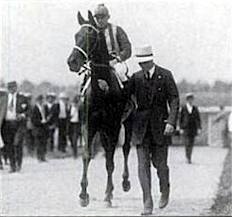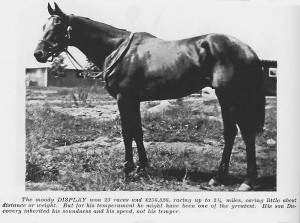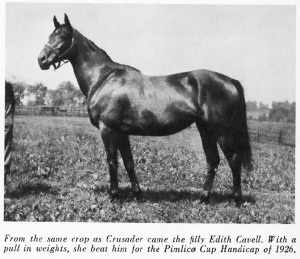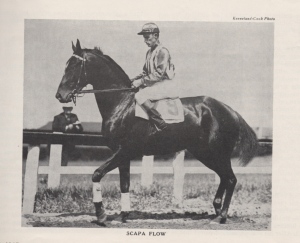AUGUST 14, 2015
Dear VAULT reader: As you know, THE VAULT published its very first article in 2011 and now enjoys a readership of over 280,000 worldwide. I cannot thank you all enough for your support and enthusiasm.
THE VAULT is a non-profit endeavour written out of love for the horses and the sport.
I felt it was time to find a way to give ‘payback,’ to use my efforts as a means of making a permanent contribution to the welfare of horses. Accordingly, I inaugurated a fund, in the name of THE VAULT, which will collect monies to be contributed towards organisations who specialize in horse rescue.
THE VAULT will feature the link below from this time on. Every few months I will post the monies that have been collected.
http://www.gofundme.com/8d2cher4
I thank you all for taking part in this endeavour. No donation is too small — every penny will help.
Thank you.
*****************************************************************************************************************************************************************************************************************
All one has to do is imagine the anticipation that will greet the sons and daughters of today’s thoroughbred champions when they first set foot on the track to understand the hope and emotions that followed Man O’ War’s progeny to the races.
Although Man O’ War’s stud career was strictly supervised — limited to 25 mares a season — leading to severe critiques of Samuel Riddle’s breeding practices, it would appear that much of the criticism is unjustified. The proof lies in statistics like these: Man O’ War’s first crop of two-year-olds won 14 races; and in 1925, with 2 crops and 21 individuals running, Big Red stood fourth on the sire list with winners of 51 races and earnings of $213,933. By 1926, with the arrival of a third crop, Man O’ War crowned the sire list.
Credit for the stallion’s success at stud goes to horsemen like John Madden and bloodlines specialist William Allison, who Riddle consulted regarding Man O’ War’s first book of mares. There is no reason to think that Samuel Riddle did anything but seek the expertise of knowledgeable people throughout Man O’ War’s breeding career.
Today, even though his name still appears in the pedigrees of some really fine thoroughbreds — and that, largely due to WAR ADMIRAL and WAR RELIC who perpetuated the Fair Play line — the majority of Man O War’s successful sons and daughters have been largely forgotten. There are at least two reasons for this. Depending on the colt in question — such as Mars or Crusader — breeders tended to prefer The Legend himself to even his very good sons. As well, given the modest number of his progeny by today’s standards, the impact of sons and daughters who didn’t accomplish much, if anything, in the breeding shed was particularly severe.
This article is the first in a series that looks at some of Man O’ War’s best progeny. Subsequent articles in this series will appear throughout 2013-2014.
1922: AMERICAN FLAG, FLORENCE NIGHTINGALE & MAID AT ARMS
By all accounts, American Flag was truly his father’s son. Foaled in Man O’ War’s first crop, American Flag was a chestnut with a faint star on his brow who, according to the accounts of the day, held an uncanny resemblance to Big Red when he was posed and when he was racing. For those who had seen Man O’ War in action, the delight at American Flag’s exploits was palpable. True, it wasn’t exactly like watching Man O’ War, but in style and talent, American Flag came very, very close.
American Flag’s best year on the track came in his 3 year-old season, where he was unbeaten, winning the Withers, Dwyer and Belmont Stakes, among others. Horse of the Year in 1925, American Flag raced once at 4, but after a second-place finish to another son of Man O’ War, Crusader, the colt was retired to stud.
As a sire, American Flag was the most successful of all of Man O’ Wars’ sons until the emergence of War Admiral. The stallion made a big splash as the sire of the Champion 2 year-old Filly of 1934, Nellie Flag. Nellie’s dam, the outstanding Nellie Morse (1921), had herself been Champion 3 year-old in 1924, after winning The Preakness, Black-Eyed Susan and Pimlico Oaks that same year. So, although American Flag couldn’t take complete credit for Nellie Flag, his daughter carried Man O’ War’s blood over the decades, appearing in the pedigrees of champions Mark -Ye-Well (1949), Forego (1970), Bold Forbes (1973) and Bet Twice (1984).
Nellie Flag’s contribution to perpetuating the Fair Play sire line notwithstanding, arguably the most famous of American Flag’s descendants was grandson Raise A Native, whose 2 year-old career ended abruptly due to injury. Raise a Native’s dam, Raise You (1946) was a granddaughter of American Flag and an excellent producer: of 14 foals she had 11 winners, 2 of which were stakes winners. But her most influential progeny was Raise A Native, who sired Mr. Prospector, Alydar, Majestic Prince and Exclusive Native, who, in turn, sired both Affirmed and Genuine Risk.
The fillies Florence Nightingale and Maid At Arms were the other superstars of Man O’ War’s first crop.
Maid At Arms, whose BM sire was another son of Rock Sand (1900) named Trap Rock (1902) was impeccably bred and sallied that blue blood on the track, winning the Alabama and Pimlico Oaks, as well as the Maryland Handicap against the colts. The filly claimed Champion 3 year-old Filly honours in 1925. However, unlike American Flag, Maid At Arms had no real impact in the breeding shed.
Florence Nightingale was a tall, elegant filly, the second foal of The Nurse (1911), a great granddaughter of the outstanding Hanover (1884). The Nurse was inbred to Mannie Grey (1874), dam of the legendary Domino (1891), together with St. Simon (1881) and Hampton (1872). So to say that Florence Nightingale was royally-bred would be somewhat of an understatement. Named after a famous figure of the day, the filly would make 34 starts, with a record of 5-2-4 and retired with earnings of $18,650 USD. Her most prestigious win came in the Coaching Club American Oaks of 1925. This win resulted in Florence Nightingale sharing Champion 3 year-old Filly honours with Maid At Arms. Like Maid At Arms, Florence Nightingale did little in the breeding shed. Of 3 foals, only Florence’s daughter, Knight’s Nurse (1933), after a visit to the British Triple Crown winner, Bahram (1932) who was standing in the USA, produced the colt Bovard (1945,) who retired with earnings of $48,855. However, Bovard appears to have had no progeny.
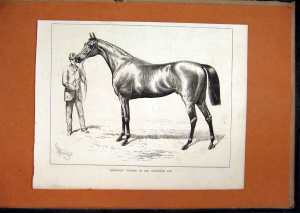
HAMPTON stood only slightly over 15h and began his turf career as a hurdler. Switched to the flat, he would win the Goodwood Stakes, the Goodwood Cup as well as the Epsom Gold and Doncaster Cups. He was Champion Sire in the UK in 1887 and some his best-known progeny include AYRSHIRE, LADAS, BAY RONALD, MAID MARION and PERDITA II. FLORENCE NIGHTINGALE was inbred to HAMPTON 5 X 5.
1923: MARS, CRUSADER & EDITH CAVELL
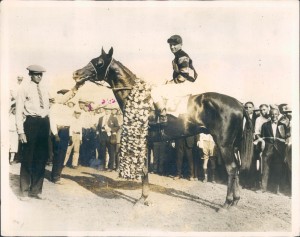
CRUSADER, shown here in the winner’s circle, with EARL SANDE in the irons, after taking the CINCINNATI DERBY, July 24, 1926. DISPLAY ran second and BOOT TO BOOT ran third. Photo and copyright, P & A PHOTOS.
Crusader is actually among the better-known of Man O’ War’s offspring. But neither Mars nor the filly, Edith Cavell, enjoy the same privilege despite the fact that both excelled on the track.
Mars was actually a “brother-in-blood” to Crusader: his dam (like Crusader’s) was also sired by Star Shoot (1898). The British-born Star Shoot was most famous for siring the Triple Crown Winner, Sir Barton; his second best runner was the great Grey Lag, Horse of the Year and champion 3 year-old of 1921. But Star Shoot was a very solid sire in general, topping the sire lists 5 times between 1911-1919 and the BM sire list for 5 consecutive years, from 1924-1929.
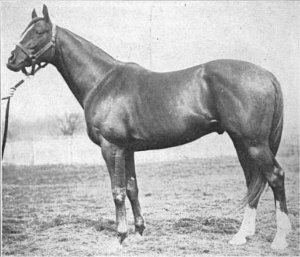
The handsome STAR SHOOT, sire of SIR BARTON and GREY LAG. Two of his daughters went to Man O’ War, producing MARS and CRUSADER.
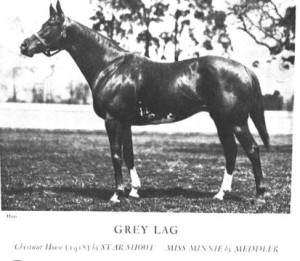
Champion GREY LAG had the unusual marking of white splashes on his belly. As a 3 year-old, GREY LAG posted 8 consecutive wins, including the Belmont Stakes and the Dwyer. Champions whom GREY LAG defeated include EXTERMINATOR, JOHN P. GRIER, MAD HATTER and PRUDERY.
Between them, Crusader and Mars took most of the stakes of their seasons, including the Travers and Saratoga (Mars) and the Belmont, Dwyer, Suburban (twice), Jockey Gold Cup and the Cincinnati Derby (Crusader). Mars, like the more notable War Admiral and Battleship, was the size of a pony at 15.2 h, but he nevertheless scooted to win the Junior Championship Stakes in a new track-record time (1:37). No 2 year-old in America had ever run this fast at a distance of a mile before him. In second place on that day was a name familiar to many: Chance Play, the 1927 Horse of the Year, another son of Fair Play who would go on to become a sire of champions like Psychic Bid (1932), Grand Slam (1933), Pot O’Luck(1942) and Now What (1937).

Horse of the Year in 1924 and 1925, SARAZEN was another champion who tasted defeat when he raced against MARS in the Dixie Handicap.
But Mars’ prowess didn’t stop there. After running third in the Preakness, fourth in the Withers and without distinction in the Belmont, Mars came home in the Saranac Handicap at Saratoga, carrying 120 lbs. He then won the Travers, defeating fellow 3 year-olds Pompey, Display and his Crusader. At 4, Mars again defeated Display, as well as the fabulous gelding, Sarazen, before retiring with earnings of $128,786 USD. Although a champion, Mars was pretty much ignored at stud and, as any racing enthusiast will tell you, unless you’re a Man O’ War or a Secretariat, immortality lies in progeny. And there were none of any merit from Mars.

CRUSADER, as he appeared in the racing annual, American Race Horses. CRUSADER died in 1940, at the then Rancho Casitas in California, where he was also buried. The property is now under Lake Casitas.
Unlike the diminutive Mars, Crusader was a big, strapping 16 h. chestnut who was reputed to be one of the most beautiful thoroughbreds of his day. Through his dam, Star Fancy, Crusader traced back to the foundation mare, Maggie B. B. (1867), a daughter of Australian (1858) and granddaughter of the very first British Triple Crown winner, West Australian (1850). Originally called Magpie, Maggie B. B.’s name was changed to honour a long-lost love of one of her several owners. Maggie B.B. is an otherwise nondescript name for a mare who made one of the most lasting contributions to the North American thoroughbred. Through her sons Iroquois (1878) and Jaconet (1875), as well as a daughter, Red And Blue (1880), Maggie B. B. exercised important influences on the breed. Red and Blue appears in Crusader’s 5th generation.
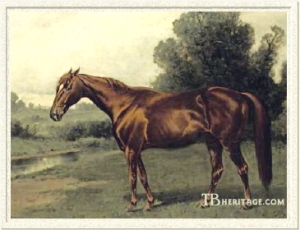
MAGGIE B.B. — named after her then owner’s lost love, this plucky lady went on to carve her own name into the very foundation of North American thoroughbred bloodlines. At her death, her owner James A. Kittson wrote, “…her death is a loss that we can never replace. We will find a place for her under the magnolias.” And he did, laying Maggie to rest near another legendary mare, FLORA TEMPLE.
Crusader did his important ancestress –as well as his legendary sire — proud.
It was said that he had a sweet disposition but, like Big Red, Crusader also had a tendency to act up at the start. He usually broke slowly and this, combined with his ornery behaviour at the start, cost him several big stakes. But his usual jockey, the great Earl Sande, best known for his Triple Crown mount, Gallant Fox, understood Crusader and the affection was returned. Crusader seemed to want to win for Earl, whose smooth, steady hands buoyed him with self-confidence.
It’s easy to imagine the excitement Crusader brought to the races. Here he was, a gorgeous son of the beloved Man O’ War, seemingly touched by the same magic. Crusader’s stride was exceptional and he convincingly dispatched really good horses like Display, Mars, American Flag, Chance Play, Espino and Sarazen, as well as a pair of incomparable fillies in Princess Doreen and Black Maria. Crusader posted the fastest Dwyer (2:29 3/5) in its history when the race was run at 1 1/2 miles. He ran in the mud and won; in fact, he ran under any conditions and won, often carrying weight as high as 126 lbs. and giving as much as 16 pounds to the horses he beat.
Crusader was a superstar and was voted Champion 3 year-old Colt and Horse of the Year in 1926.
Said Walter S. Vosburgh, then an official handicapper in New York, of the champion: “Crusader was so emphatically the colt of the year that few will dispute it. As a matter of opinion, he was not as great a colt as his sire, but as a matter of record he was greater, for Man O’ War did not go out of his class. This Crusader did. He boldly went out to race the all -aged class for the Suburban and defeated them…Crusader set the seal to his greatness by winning the (Jockey) Gold Cup.”
Crusader began his stud career at Colonel Phil Chinn’s Himyar Stud, in Kentucky, having been leased to Chinn by Samuel Riddle. He was then leased to the Californian, Walter Hoffman, who moved him to Rancho Casitas in California, where Crusader stood until his death in 1940. Sadly, Crusader had little luck as a stallion. A daughter, Heatherland (1930), is one of the few direct descendants to still appear in contemporary pedigrees.
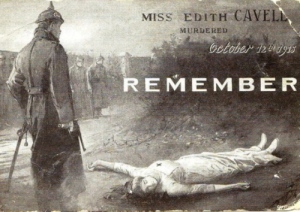
A propaganda postcard, commemorating the execution of the British nurse, Edith Cavell, at the hands of the Germans during WWI.
The Nurse’s second Man O’ War filly was named after another heroic nurse.
Edith Cavell was an English nurse who worked in Brussels during WWI. She was a nursing teacher, later starting her own nursing school in Belgium. After the war started, and the Germans invaded Belgium, she began to hide Allied soldiers and help them to cross the border into safe territory. The Germans eventually captured the hospital and turned it into a Red Cross hospice, keeping Cavell on as matron. But Edith Cavell had no time for wounded men branded as “the enemy” and she cared for the German soldiers just as she had the Allied soldiers.
Cavell continued to hide English, Belgian, and French soldiers, despite German suspicions. By 1915, she had helped at least 200 soldiers leave enemy territory to return to their units. However, the German secret police discovered what she was doing, and had her arrested. Edith Cavell was shot before a German firing squad on October 12th, 1915 as a traitor. But, given her heroic exploits, Cavell’s execution lifted her from mortal to saint, inspiring an increase in morale and recruitment within the Allied ranks.
As is noted in the photo of her above, the filly Edith Cavell beat Crusader in the 1926 Pimlico Cup Handicap. What should be added is that she also established a new track record for 2 1/2 miles, reducing by four fifths of a second the previous record held by none other than the fabulous Exterminator. That same year Edith Cavell also took the Latonia and Coaching Club American Oaks and tied with Black Maria for Champion 3 year-old Filly honours in 1926.
Sadly, the brilliant filly only had one registered foal, by Edward R. Bradley’s champion Bubbling Over (1923). Edith Cavell died in 1937 and was laid to rest at Faraway Farm, near her dam: (http://www.tbheritage.com/TurfHallmarks/Graves/cem/GraveMattersFaraway.html).
1924: SCAPA FLOW
Not to be confused with the famous British mare of the same name, Scapa Flow is arguably the least well-known of Man O’ War’s really good offspring today. However, Samuel Riddle revered the colt as the best son Man O’ War ever sired. (Not even War Admiral’s Triple Crown could alter Riddle’s point of view. ) But Scapa Flow had an Achilles heel that was like a time bomb, waiting to explode: from the very beginning, he was plagued by bad ankles. And, as the photo above suggests, those frail ankles needed to carry a very solid frame.
Out of Florence Webber(1916) by Peep O Day(1893), Scapa Flow was another Man O’ War who traced back to Maggie B. B. Owned by Walter M. Jeffords, who was married to a niece of Samuel Riddle and who, with Riddle, owned and operated Faraway Farm, the big beautiful bay colt was put into the hands of trainer Scott P. Harlan. Harlan had already trained Edith Cavell for Jeffords, and would go on to train another exceptional Man O’ War daughter, Bateau (1925) for him as well. Harlan had also trained another Champion 3 year-old Filly for Helen Hay Whitney, Untidy (1920). In 1926, Harlan’s best year, he earned $205,681 — an extraordinary sum in those days — and a fair portion of those earnings were linked to 2 year-old wins by Scapa Flow and Edith Cavell’s extraordinary 3 year-old campaign.

HOF Jockey FRANK COLTILETTI would pilot SCAPA FLOW to victory during the colt’s 2 year-old campaign. Upon his retirement, COLTILETTI would confide that the best horse he ever rode was another son of Man O’ War — MARS.
Bad ankles aside, Scapa Flow not only had the benefit of a great trainer but also the services of HOF jockey, Frank Coltiletti. The darling of the Bronx’s closely-knit Italian community, Coltiletti was born in 1900 and began his career as a 59-lb. 14 year old. Two years later, at the ripe old age of 16, the young jock rode 115 winners to stand third in the national jockey standings. Coltiletti made his name by turning colts and fillies into champions. Greats like Crusader, Black Maria (1923), Edith Cavell, Broomspun (1918), Mars and Sun Beau (1925) passed through his hands. In an interview that he gave at the time of his retirement, Coltiletti revealed that Mars had been the best horse he ever rode. High praise, coming from a hard-working jockey who had notched up a lifetime record of 14.5 % winners.

The champion filly BLACK MARIA was piloted by COLTILETTI. She shared Champion 3 year-old Filly honours with EDITH CAVELL in 1926.
Scapa Flow’s 1:14 2/5 win in the United States Hotel Stakes at Saratoga in 1926 brought him out of obscurity. With Coltiletti in the irons, the colt charged out of the gate as though launched by a cannon. He would go on to win the Belmont Futurity that same year, as well as placing 2nd and 3rd in the Saratoga Special and Hopeful, respectively. His spectacular showing as a juvenile earned Scapa Flow Championship 2 year-old Colt honours.
During 1927, the colt appears to have been lightly raced, likely due to sore ankles, although he did win the Bowling Brook Purse. By 1928, however, he was back in action, running 2nd in the Dixie, Harford and Toboggan Handicaps and coming in 3rd in the Metropolitan and the Suburban. On June 17, 1928, Scapa Flow broke down during the running of the Brooklyn Handicap and had to be destroyed. His loss was shattering for both the Jeffords’ family and Samuel Riddle, who had a kind of sixth sense that Scapa Flow was destined to be a superlative sire.
Other talent from the 1924 crop included the colts Broadside, War Eagle and Son O Battle, as well as an exceptional filly named Mix-Up, who started 59 times and closed off her career with a record of 17-11-7. None of these did much at stud, however, making the loss of Scapa Flow even more poignant.

SCAPA FLOW was named after a body of water in the Orkney Islands where the British Grand Fleet was stationed during WW1. Rich in history, the Vikings sailed into Scapa Flow some thousand years ago.
RESEARCH SOURCES
“Man O’ War’s Other Sons” by Betty Moore published in the Thoroughbred Record (January, 1965)
“Man O’ War” by Page Cooper & John L. Treat. NY: Julian Mesner Inc. 1950


